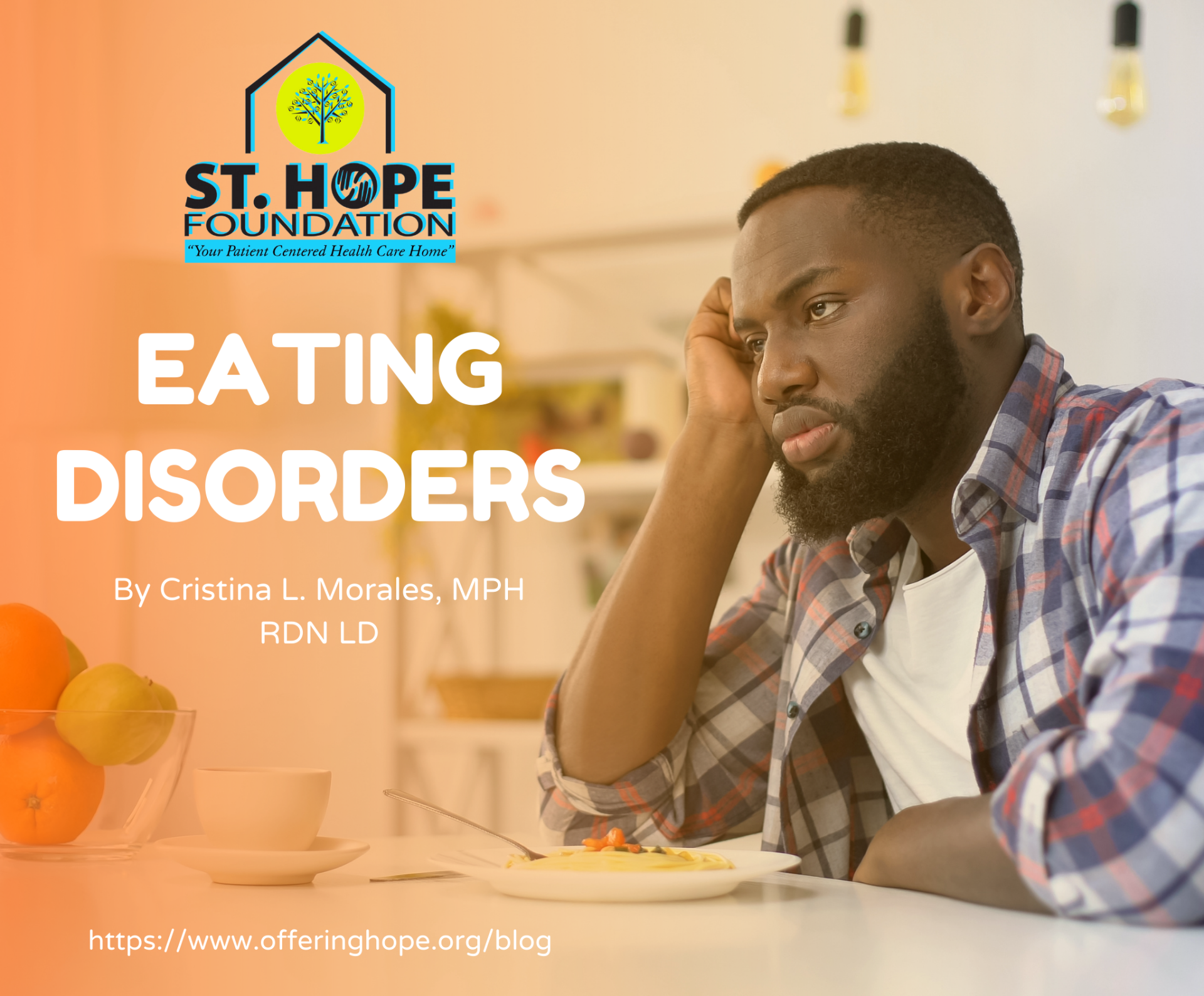Recent Posts
Eating Disorders

With the overarching social pressure to be thin, a high percentage of teens and adults are turning to fad diets to help slim down. However, hidden behind seemingly innocent dieting maneuvers, a serious health issue such as an eating disorder is of great concern. There are several types of eating disorders, each with specific behaviors that encompass troubling thoughts and emotions surrounding the type, amount, and frequency of food intake. Eating disorders pose serious health threats and can have long-lasting health consequences or become fatal.
Anorexia Nervosa is characteristic of food restriction, such as eating a third or less of a regular sized meal, followed by excessive exercise to burn calories consumed. This disorder involves an intense fear of weight gain and often includes unrealistic body images. With continued food restriction and declining body weight, Anorexia Nervosa can lead to muscle weakness and heart failure. Bulimia Nervosa involves eating a large quantity of food and immediately purging (vomiting); for example, eating three supersized fast-food meals and then forcing self to vomit. Whereas Binge-Eating Disorder involves eating large portions of food within a specific time period, such as eating an entire large pizza despite feeling full half way through and finishing the food without purging. Lastly, there is selective eating disorder that is now called Avoidant Restrictive Food Intake Disorder (ARFID). This disorder closely resembles food restriction behaviors seen with Anorexia Nervosa; however, the behavior is commonly labeled as being a “Picky Eater. This disorder includes avoidance of specific foods, textures, preparations, avoiding a food group, and restriction of intake. Unlike Anorexia, exercise regimen, body image, and fear of weight gain are not a concern. Due to lack of proper nutrition, this disorder affects children the most and stunts normal growth, and in adults, it severely declines normal body functions. Recovery of eating disorders is attainable; however, the illness can last a lifetime. For optimal outcomes, specific treatment modalities that involve hospitalization, individual and group therapy, psychotherapy, and nutrition therapy are encouraged. The causes of eating disorders have been linked to family genes, social influences, biological factors, and psychological factors such as emotional trauma. Research studies have concluded that more studies are needed to truly understand the root cause of eating disorders. To learn more about eating disorders check out the link below. https://www.nimh.nih.gov/health/topics/eating-disorders
Till next time, stay healthy and be well.









